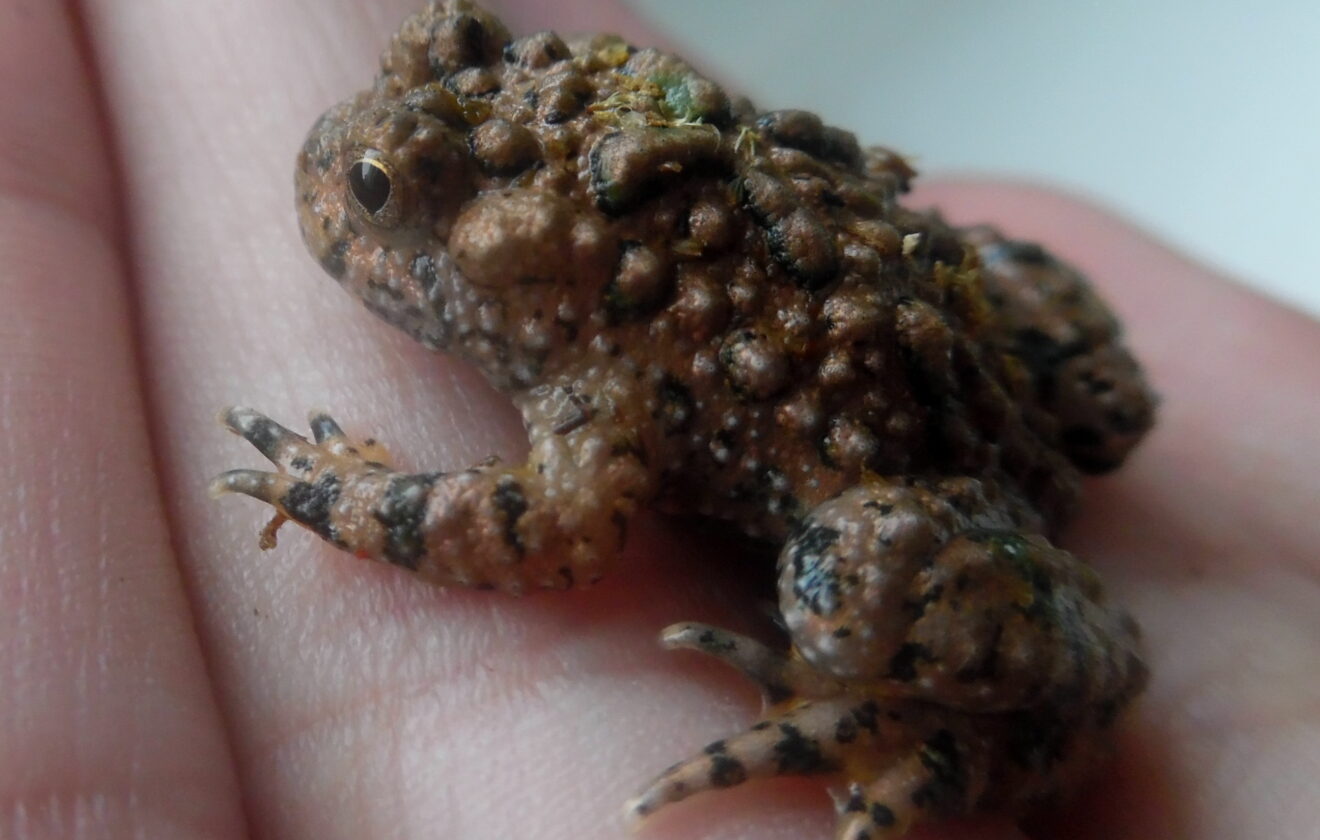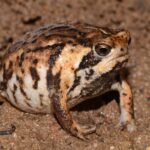Exploring Bombina maxima: The Majestic Giant Fire-Bellied Toad of Asia#
Hidden among the moss-covered rocks of China’s lush mountainous streams, a small amphibian waits quietly, its vivid orange belly glowing like embers against the shaded water. Meet the Giant Fire-Bellied Toad, scientifically named Bombina maxima, a fascinating species that captivates researchers and nature enthusiasts alike. With its striking colors, intriguing behaviors, and vital role in China’s fragile ecosystems, Bombina maxima embodies the beauty and complexity of amphibian life.
Beyond the mesmerizing patterns and vivid coloration that have earned it admiration among herpetologists, this remarkable species serves as a crucial bioindicator of environmental health—a true sentinel of nature’s delicate balance. Join us on a deep dive into the captivating world of Bombina maxima, an exploration shaped by vibrant habitats, remarkable adaptions, intriguing behaviors, and pressing conservation challenges.
Taxonomy and Classification#
Bombina maxima belongs to the Bombinatoridae family, a distinctive group of amphibians known commonly as fire-bellied toads. Within this family, the genus Bombina includes a handful of vibrantly colored species recognized for their bright ventral patterns. Among these colorful cousins, the Giant Fire-Bellied Toad stands out for its notably larger size, hence the Latin specific epithet “maxima,” translating directly as “largest.”
Its closest relatives include several species widespread across Eastern Asia and parts of Europe, such as the oriental fire-bellied toad (Bombina orientalis), a smaller, yet similarly eye-catching species popular among hobbyists. Distinctive morphological traits, geographic range, and subtle behavioral characteristics define each species, making Bombina maxima particularly intriguing to researchers and enthusiasts alike.
Natural Habitat#
The Streams and Forests of Southwest China#
Traversing moss-laden forest trails in China’s mountain passes, one might chance upon pristine streams cascading gently among the shadows of tall, leafy canopies. It is here—primarily across provinces such as Sichuan, Yunnan, and Guizhou—that the Giant Fire-Bellied Toad calls home. Favoring cool, clear mountain streams surrounded by dense, moisture-rich forests, the species is closely associated with water bodies that provide both nourishment and reproductive habitats.
Detailed ecological studies reveal that Bombina maxima spend most of their adults lives nestled along moist stream banks, under rocks, or partially submerged in shallow pools. They flourish particularly in rocky, mountain habitats between elevations ranging from 1,500 to 3,000 meters above sea level. Such elevation-specific habitats provide the ideal blend of humidity, temperature, and aquatic resources vital to their life cycle.
Adaptation to a Complex Environment#
The Giant Fire-Bellied Toad’s choice of habitat is far from random. Remarkable adaptations allow it to thrive in these challenging ecosystems. Its skin possesses exceptional permeability, efficiently absorbing moisture and oxygen directly from its aquatic environment. Furthermore, areas along mountain streams showcase differential elevations and microclimates, allowing the species to find optimal conditions suited both for breeding and survival.
However, narrow habitat specificity and reliance on clean, unpolluted waterways leave this species vulnerable, highlighting their critical role as indicators of ecosystem health and integrity.
Physical Characteristics#
Fiery Underbellies and Cryptic Camouflage#
Bombina maxima lives up to its name, measuring approximately 7 to 10 centimeters, considerably larger than its European and Oriental counterparts. Its dorsal side, a patchwork of muted greens, browns, and olives speckled with blackish warts, seamlessly blends with its rocky, moss-covered surroundings. Such cryptic coloration allows the toad to evade predators, camouflaging effectively amidst its rocky habitat.
Turn this amphibian gently in hand, however, and the contrast is astonishing—bold patterns of bright oranges, reds, and jet blacks form swirling mosaic pigments across its belly. These striking ventral patterns constitute aposematic (warning) coloration, a form of defense signaling potential toxicity. When threatened, the toad exhibits an “unkenreflex”—arching its back, curling limbs upwards to prominently display its vivid underside, effectively warning predators of its poison glands located within the skin.
Skin and Chemical Defenses#
Morphologically, the Giant Fire-Bellied Toad possesses many wart-like glands along its back and limbs, secreting milky white toxins. These defensive chemicals, known as bombesins, range in potency and complexity across the genus. In Bombina maxima, these toxins primarily deter predators, showcasing the potent biochemical arsenal evolved over millions of years of predator-prey dynamics.
Behavior and Life Cycle#
Diet and Predatory Techniques#
Active primarily at dusk and dawn, Bombina maxima employs a sit-and-wait hunting strategy. With stealthy patience, the toad remains motionlessly disguised among forest litter or submerged partially beneath clear water, its large, expressive eyes carefully assessing potential prey. Diet analysis indicates preferences toward insects and arachnids, including beetles, spiders, caterpillars, moths, and ants—resources plentiful in its lush forest habitats.
Mating Rituals and Parental Investment#
Each spring, as mountain snows melt and streams swell, gentle croaks and echoing calls pierce the humid mountain air—the male toads vocalizing melodic yet distinctly rhythmic calls from carefully chosen positions at the water’s edge. These low-frequency calls attract females ready to deposit their jelly-like masses of fertilized eggs directly into slow-moving pools or quiet stream eddies.
Upon hatching, tadpoles quietly dominate freshwater aquatic habitats. Their larval transformations over several weeks are meticulously synchronized with seasonal rains and warming air, eventually yielding fully transformed juveniles who migrate toward terrestrial cover areas around waterways. Here the cycle begins anew, carefully syncing with environmental rhythms shaping life and survival in mountain forests.
Ecological Role#
As integral middle-level consumers within delicate mountain ecosystems, Bombina maxima links insect prey sources with larger predators such as birds, fish, and various mammals. Moreover, their larvae and tadpoles aerate freshwater habitats, controlling algae populations and expanding niche habitats for other aquatic species.
The toads themselves become prey targets for predators such as snakes and larger birds but, significantly impacted by their toxin glands, predators quickly learn caution, maintaining delicate predator-prey equilibrium in these ecosystems.
Most crucially, as amphibians with sensitive skin permeable to environmental pollutants, their ecological health and populations signal broader ecosystem viability—predominantly sensitive indicators registering early signs of habitat degradation.
Threats and Conservation Status#
Despite their vibrant coloration and ecological importance, Bombina maxima faces escalating pressures primarily related to habitat destruction, pollution, and climate shifts. Agricultural encroachment, deforestation, and infrastructure development increasingly fragment and degrade critical habitats, endangering population resilience.
Globally classified as “Least Concern” by the IUCN, caution remains necessary. Continuous assessments indicate localized populations are becoming scarcer and fragmented, thereby warranting focused habitat protection measures. Conservation biologists emphasize meaningful protective actions targeting habitat connectivity, pollution control, and general education among local communities regarding amphibian relevance.
Cultural and Scientific Significance#
For communities within Southeast China, amphibians, including Bombina maxima, symbolize environmental purity, respected due to such close ecological dependency on water purity. Culturally referenced in folklore, their appearances in myths and indigenous storytelling often signal good fortune, rain’s coming, or successful harvests.
Beyond cultural frameworks, scientific interest emphasizes beneficial biochemical signatures within toxins, potentially vital in pharmaceutical research. Additionally, extensive study of their ecological indicator status substantially aids environmental conservation practices and reinforces global biodiversity awareness campaigns.
Conclusion: A Gentle Guardian of Freshwater Habitat Health#
Enigmatic, vivid, and fascinatingly adapted, the Giant Fire-Bellied Toad emerges as a powerful symbol of ecosystems both resilient yet vulnerable. Thoughtful appreciation and determined protection of Bombina maxima‘s delicate habitats mean securing broader biodiversity, safeguarding invaluable aquatic resources, and celebrating one of China’s most colorfully inspiring amphibians. For enthusiasts and conservationists alike, supporting ongoing scientific exploration, habitat protection initiatives, and truly appreciating the richness of amphibian biodiversity remain fundamental to our interconnected planetary health.
Whether captivated by striking colorations, intrigued by adaptive biological capacities, or committed to broad environmental concerns, let the story of Bombina maxima inspire action, respect, and deeper ecological understanding.















